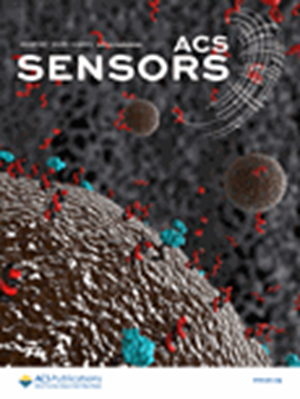磷酸盐基锂离子导体在碱性环境中的降解机制
IF 8.2
1区 化学
Q1 CHEMISTRY, ANALYTICAL
引用次数: 0
摘要
NASICON 型锂导体(Li-NASICON)因其在水中和环境空气中的稳定性,历来被视为固态锂空气电池应用的理想候选材料。然而,锂空气电池阴极中水的存在会将放电产物从 Li2O2 转变为 LiOH,从而诱发高碱性环境,这有可能导致阴极和隔膜材料降解。本研究通过对 x = 0-2.0 变化的 LiTixGe2-x(PO4)3(LTGP)进行系统实验研究,探讨了常见锂-NASICON 化学物质的碱性稳定性。结合密度泛函理论计算,从机理上理解了碱性不稳定性。研究表明,LTGP 在碱性环境中的不稳定性主要是由 PO43- 基团的溶解引起的,这些基团随后沉淀为 Li3PO4。钛的引入有助于在表面形成富含钛的化合物,最终使材料钝化,但只有在发生显著的体质降解后才能实现。因此,基于磷酸盐的 Li-NASICON 材料表现出有限的碱性稳定性,引起了人们对其在潮湿的锂空气电池中的可行性的担忧。本文章由计算机程序翻译,如有差异,请以英文原文为准。
Degradation Mechanism of Phosphate‐Based Li‐NASICON Conductors in Alkaline Environment
NASICON‐type Li conductors (Li‐NASICON) have traditionally been regarded as promising candidates for solid‐state Li‐air battery applications because of their stability in water and ambient air. However, the presence of water in the cathode of a Li‐air battery can induce a highly alkaline environment by modifying the discharge product from Li2 O2 to LiOH which can potentially degrade cathode and separator materials. This study investigates the alkaline stability of common Li‐NASICON chemistries through a systematic experimental study of LiTix Ge2‐x (PO4 )3 (LTGP) with varying x = 0–2.0. Density functional theory calculations are combined to gain a mechanistic understanding of the alkaline instability. It is demonstrated that the instability of LTGP in an alkaline environment is mainly driven by the dissolution of PO4 3– groups, which subsequently precipitate as Li3 PO4 . The introduction of Ti facilitates the formation of a Ti‐rich compound on the surface that eventually passivates the material, but only after significant bulk degradation. Consequently, phosphate‐based Li‐NASICON materials exhibit limited alkaline stability, raising concerns about their viability in humid Li‐air batteries.
求助全文
通过发布文献求助,成功后即可免费获取论文全文。
去求助
来源期刊

ACS Sensors
Chemical Engineering-Bioengineering
CiteScore
14.50
自引率
3.40%
发文量
372
期刊介绍:
ACS Sensors is a peer-reviewed research journal that focuses on the dissemination of new and original knowledge in the field of sensor science, particularly those that selectively sense chemical or biological species or processes. The journal covers a broad range of topics, including but not limited to biosensors, chemical sensors, gas sensors, intracellular sensors, single molecule sensors, cell chips, and microfluidic devices. It aims to publish articles that address conceptual advances in sensing technology applicable to various types of analytes or application papers that report on the use of existing sensing concepts in new ways or for new analytes.
 求助内容:
求助内容: 应助结果提醒方式:
应助结果提醒方式:


